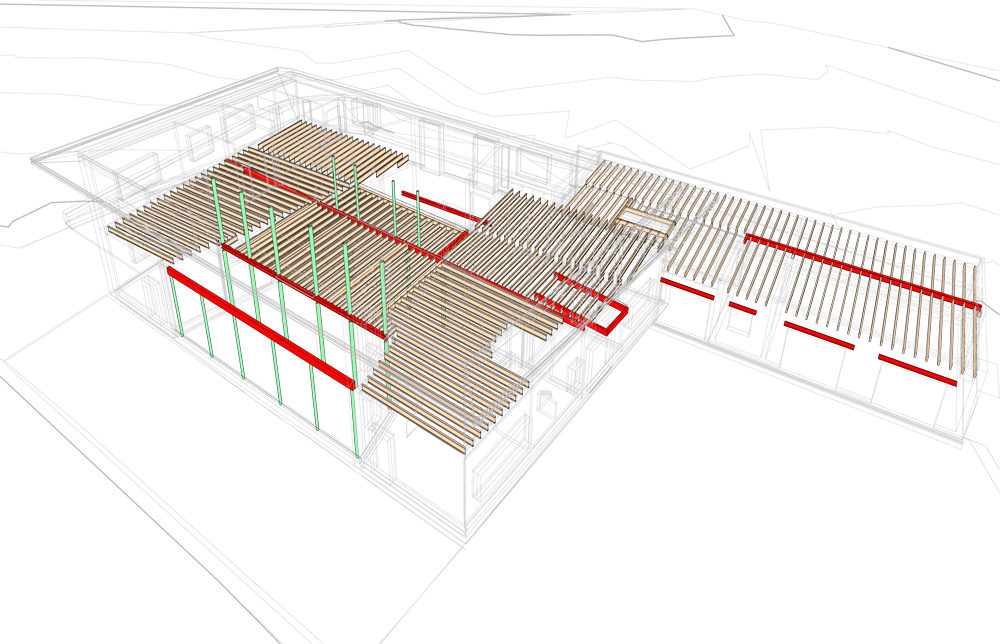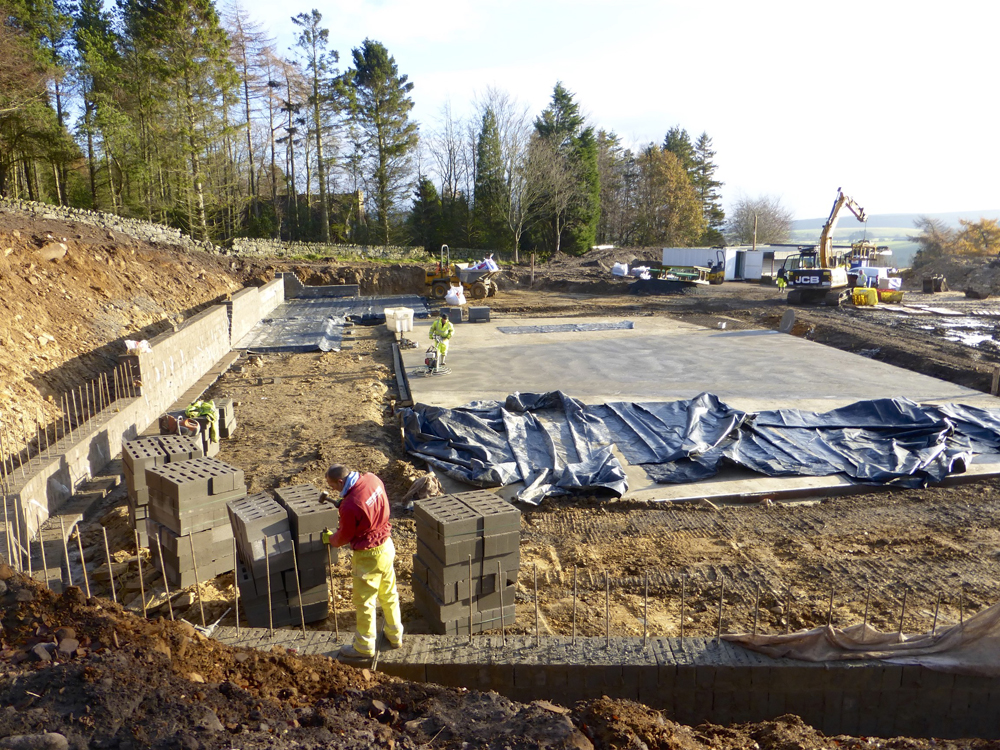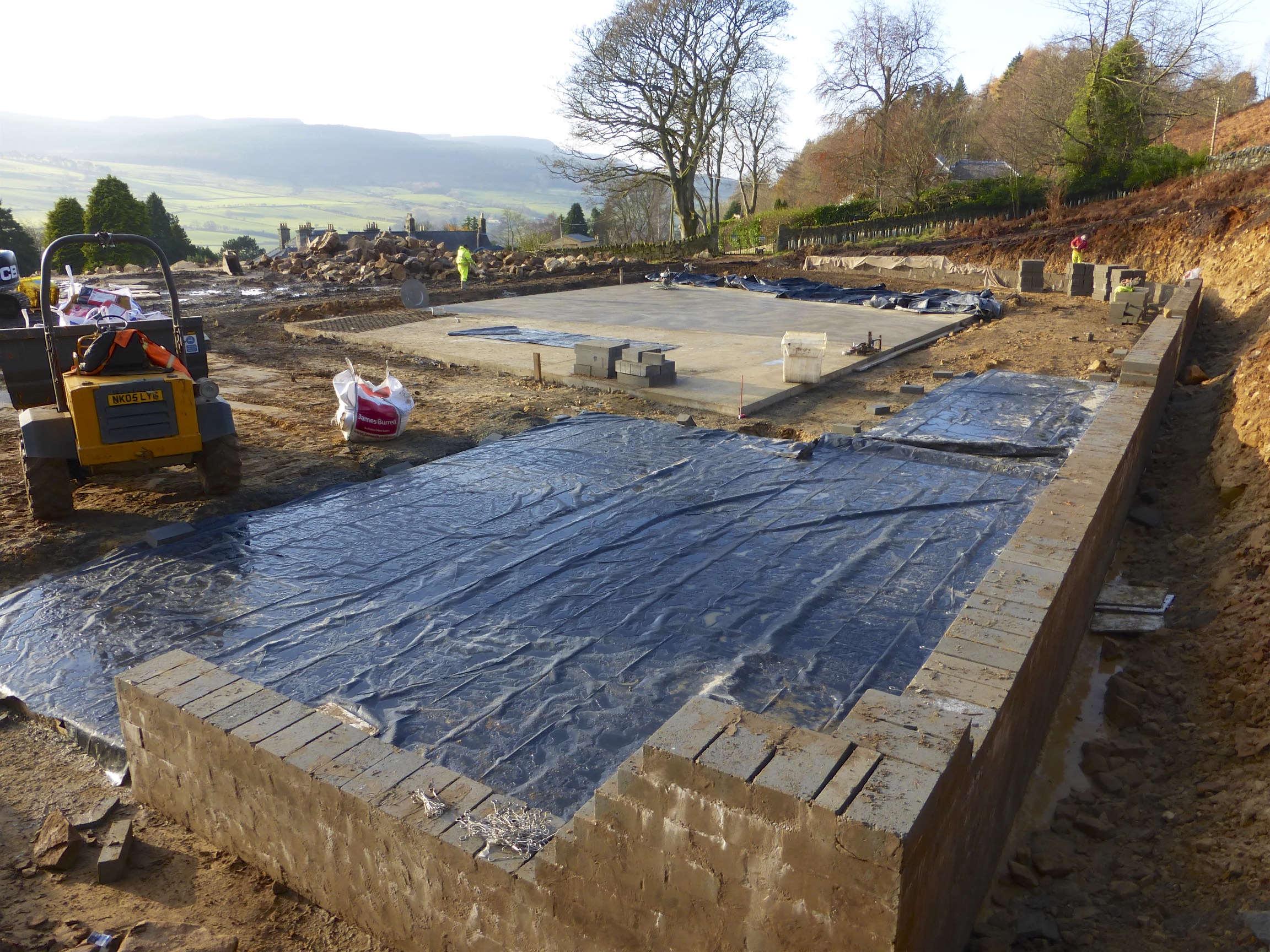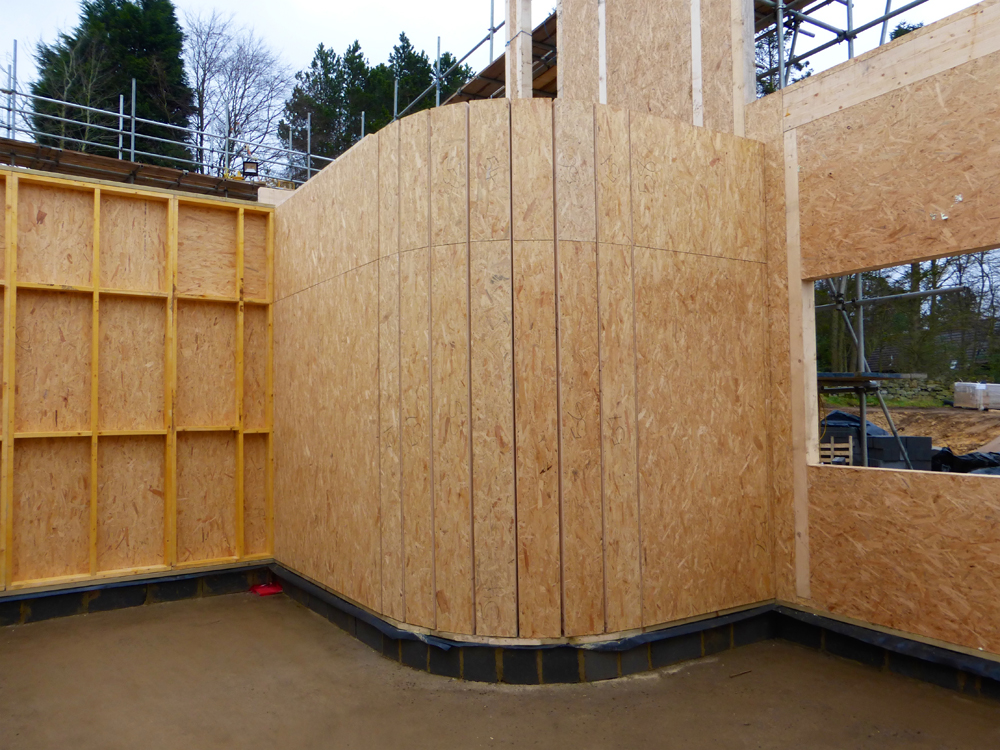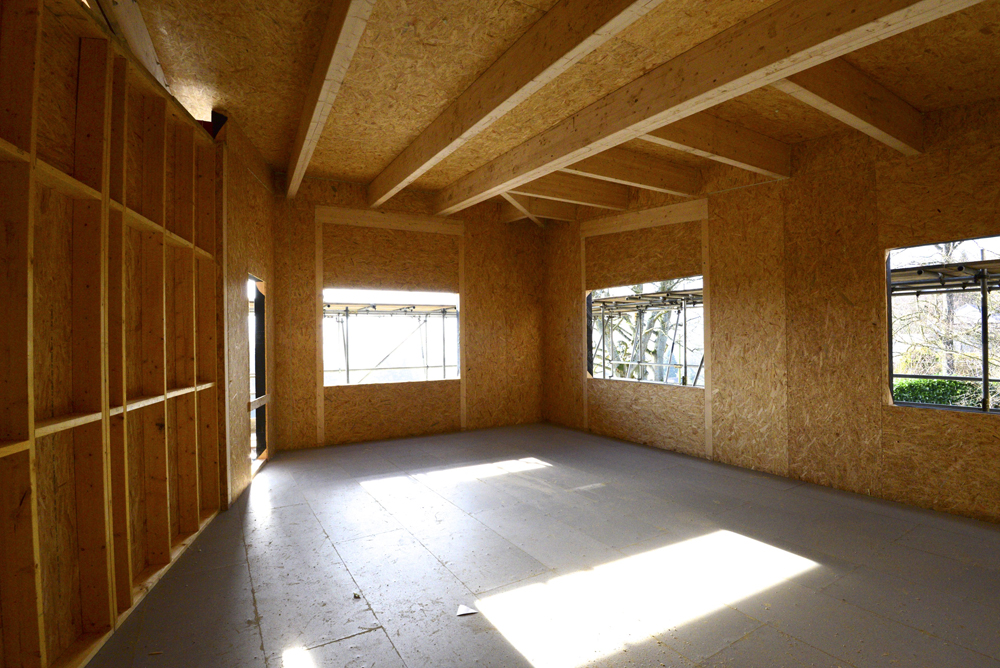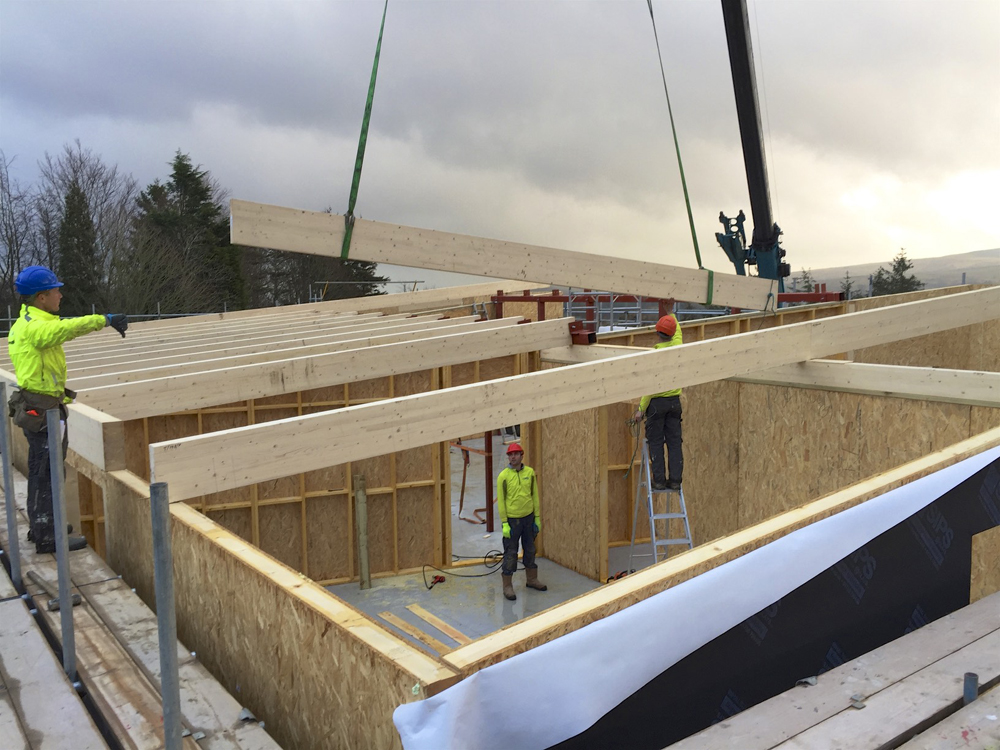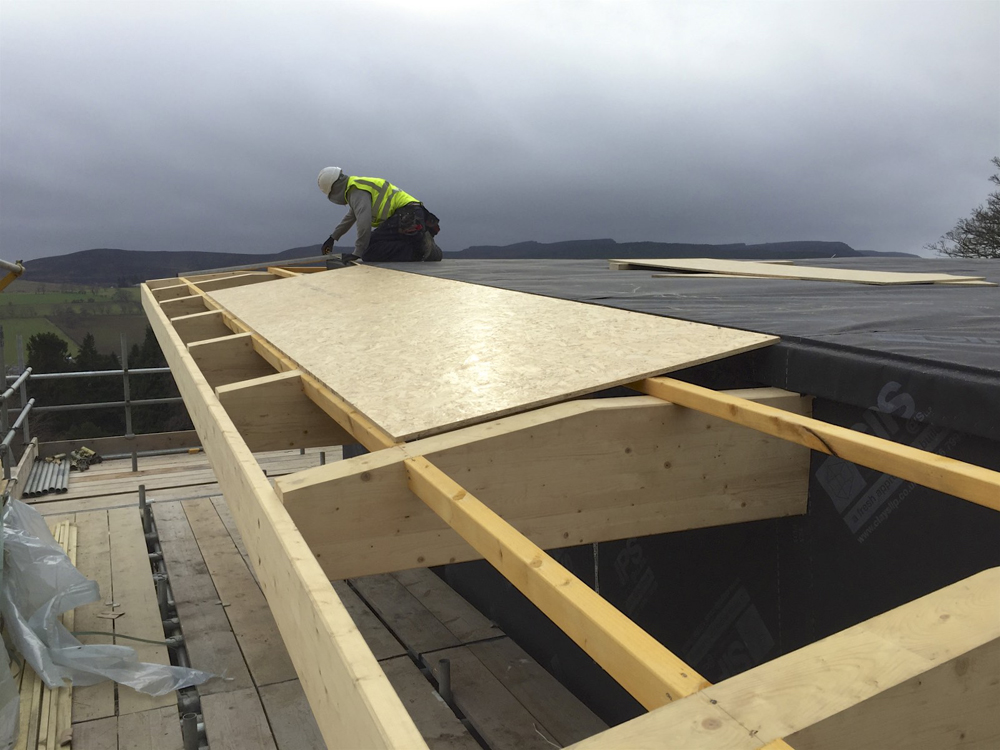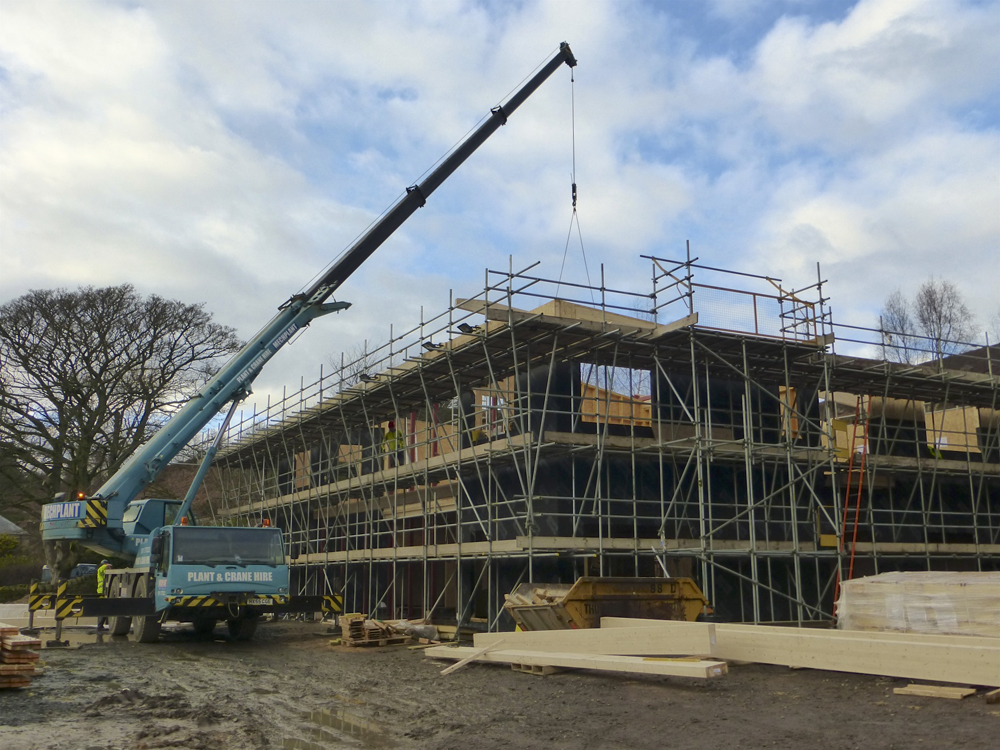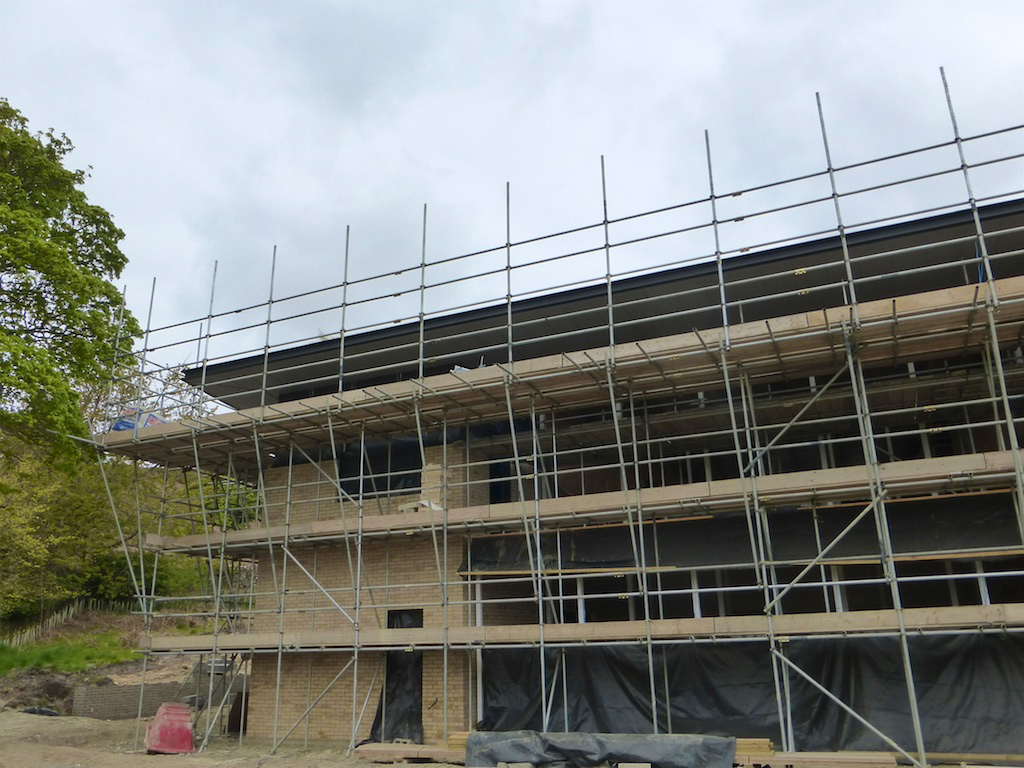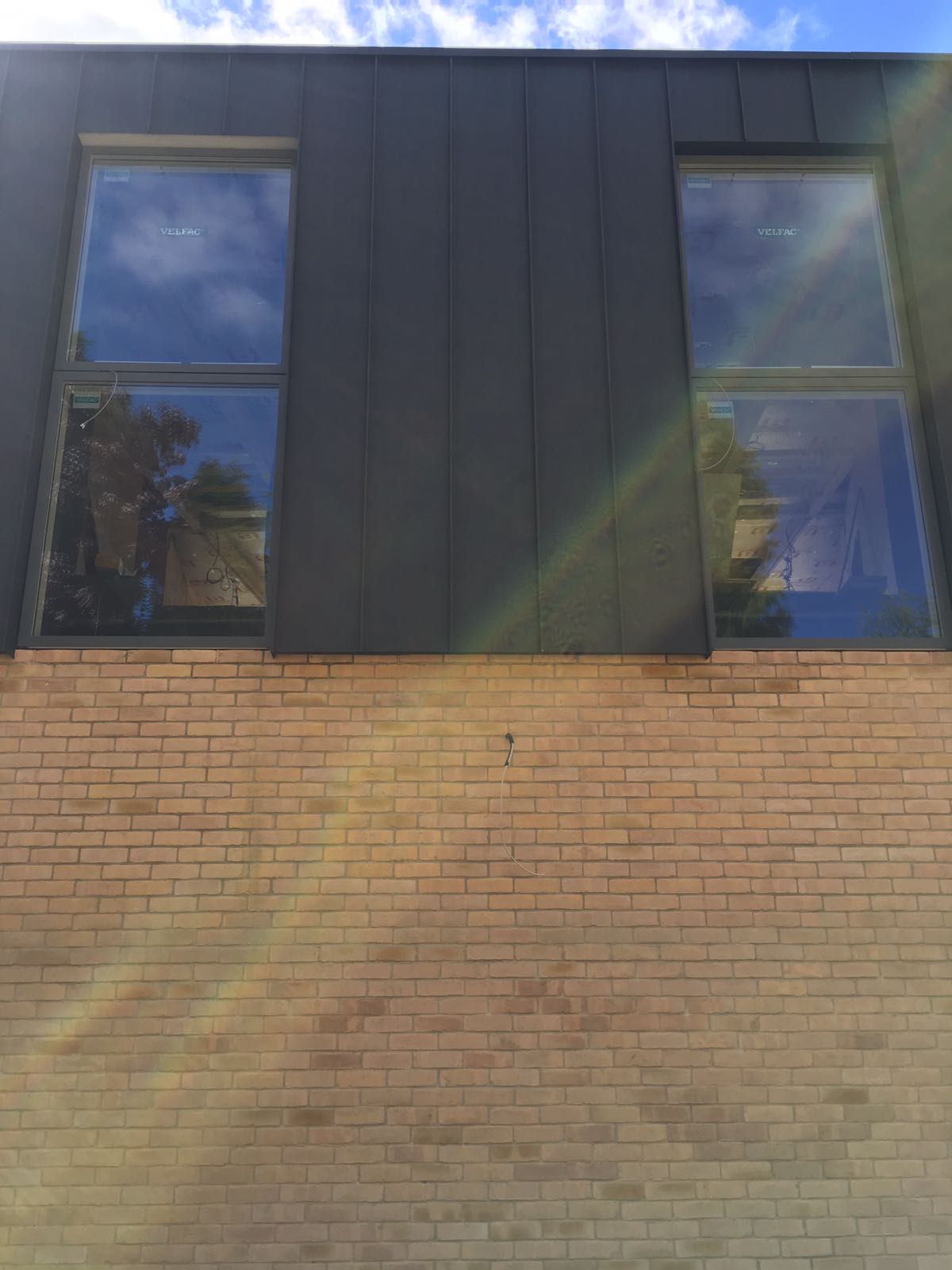Live Project - New Build Rothbury, Northumberland
Richard and Ros purchased the site located in the Northumberland Town of Rothbury to build a unique modern house that will maximise the stunning views across the Northumberland Countryside. Richard and Ros worked through the initial concept design with their Architect daughter Helen Groves.
The key aspect of the design is to capitalise the views from the site and the orientation to increase natural sunlight. The property is designed to be constructed from SIPs (Structural Insulated Panels) that are manufactured offsite then delivered and erected onsite.
The combination of a highly thermal fabric achieved by the SIPs structure and the use of the latest technologies from MVHR, to Air Source Heat Pumps and a stand alone PV array the property achieves an A+ SAPS Rating.
To deliver this unique property our clients Richard & Ros, the main contractor Smailes Construction and the Model Projects Team have worked closely to deliver an efficient onsite program.
Existing Site & Location
The site is located on a large slope with south facing vista, with fantastic panoramic views around the the Northumberland countryside. The site is spread over 3 acres with an existing 1970’s bungalow. The current bungalow will be demolished as part of the works.
The site benefits from natural vegetation, natural mature trees and varying wildlife. The original dry stone wall remains, along with rock formations, giving the site a rural feel. The house is found within a rural setting and yet within walking distance to the center of Rothbury, including a selection of shops, pubs and restaurants.
The proposed house has been located to the top of the site to maximise the great views. The house has been cut into the top of the slope with a retaining wall holding and sculpting the land back. All earth is to be retained and sculpted onsite to form a free flowing garden following the natural topography.
Ground Works & Site Preparation
Before construction works could start extensive onsite earth movement was required to prepare the site for the new dwelling. The works included cut and fill to allow for both the retaining walls and the slab.
The house has been designed to sit on a reinforced raft foundation slab. Due to the natural rock a raft foundation is ideally suited for this type of scheme. An initial layer of hardcore was compacted down to create a level base. Rebar mesh was laid to the form and shape of the main house and garage. The slab was then poured in four phases.
The retaining wall is built from block work, sitting on a strip foundation reinforced with rebars.
The other major challenge onsite was the main drainage run, as the public sewer is located at the bottom of the site. Due to the steep slope a series of drop shaft manholes were required and surface water dealt with via large soakaways.
Sips Superstructure
Following on from the completion of the raft foundation the next onsite phase was to set out the kicker brick. The kicker brick is an important element of any SIPs structure as this sets out the footprint for the erection of the panels. As the panels are manufactured in factory conditions the layout of the kicker brick needs to meet a small millimeter tolerance.
During this phase of works which consisted of 5 weeks all parts of the superstructure were erected from the ground and first floor walls, first floor structural deck and structural roof, consisting of both purlins and SIP panels. The SIPs panels are Kingspan TEK and the delivery partner is SIPS@Clays LLP.
To create the wonderful open spaces inside, steel has been incorporated in the structural designs of the house. In relation to the Kingspan TEk and glulams the design of the steel was crucial to stop cold bridging.
Structural Insulated Panels (SIPs) are a high performance building system for residential and light commercial construction. The panels consist of an insulating foam core sandwiched between two structural facings, typically oriented strand board (OSB).
SIPs are manufactured under factory controlled conditions and can be fabricated to fit nearly any building design. The result is a building system that is extremely strong, energy efficient and cost effective. Building with SIPs will save you time, money and labour.
External Finishes
Roof Finish
A standing seam metal roof has been designed to the main roof and the rear wall to the north. Due to the large area of roof and long spans the choice of material was crucial. Precoated aluminium was the desired option as it is a flat rolled product with natural textures.
Precoated aluminium was also suitable for all the key elements of the roof including the main roof covering, rear wall, soffit and fascia. The fascia detail is an important design feature and has been designed to form a C-section. The C-section is a dark natural colour to match the main roof and rear wall, while the soffit is a lighter grey.
Brickwork
The main house has been designed with brick facing. The brickwork is a standard size and is Bradgate Multi Cream. The brickwork is tied to the main SIPs structure using specialist wall ties and leaving a 50mm air cavity. Specialist lintels have been designed that use brick slips to create a seamless surround around each opening.
Windows & Doors
The windows and doors are aluminum with a grey finish to the external with a white painted timber to the inside. The main feature to the house is the three large curtain walls to the south side. These consist of two to the ground floor (an inner and external layer to the conservatory space), while a single curtain wall is located to the upper living room. The front door is designed as a solid timber door with two full height fixed side lights.
Microgeneration and Sustainable Design
The form of the house looks at all aspects of sustainable design from the use of the latest building methodology through to the integration of microgeneration. Pre construction analysis shows that the property achieves A+ SAPs rating. SAP rating is a measure of a dwelling's energy performance.
Building Fabric
To achieve a suitable home we first look at the fabric of the building from the superstructure through to the windows & doors. The aim is to create a thermally efficient air tight building. The use of SIPs construction with modern glazing achieves a highly thermally efficient building with very low U-values. U-value is a way of measuring the thermal efficiencies within elements of a building.
Along with the Kingspan TEK SIPs structure the design includes a high level of insulation to the slab, a further 50mm of insulation to all external SIP walls and a further 80mm insulation has been added to the underside of the SIP roof panels.
Another key passive design principle is the inclusion of a large roof overhang to the southside to help reduce solar gain in the summer months.
MVHR & Airtightness
Due to the airtightness of the property achieving air flow is vital, this is accomplished by the introduction of Mechanical Ventilation with Heat Recovery (MVHR). MVHR supplies fresh air into the property through a filtered inlet, whilst removing stale air out of the building. Generally this system removes air from key rooms like bathrooms and kitchens and distributes fresh air into living spaces like bedrooms and living rooms. To achieve a sustainable performance the hot stale air is passed through a heat exchanger that passes the energy to the fresh air coming into the property, as such improves climate control and reduces energy demand.
Microgeneration
Due to the high cost of supplying a new gas connection to the property and to help future proof the dwelling an alternative heat source is required. Air Source Heat Pumps form the main space heating and water heating for the property. An Air Source Heat Pump transfers heat from the outside to the inside via the principle of vapour compression refrigeration. An internal thermal store is included within the system to allow instant heat for the occupants.
A Photovoltaic Solar Array has been included within the scheme to provide onsite electricity to the dwelling. The property is connected to the national grid, however, onsite generation is desirable to reduce the impact of increasing energy costs. The site is ideally situation for a free standing array due to the large south facing slope.







